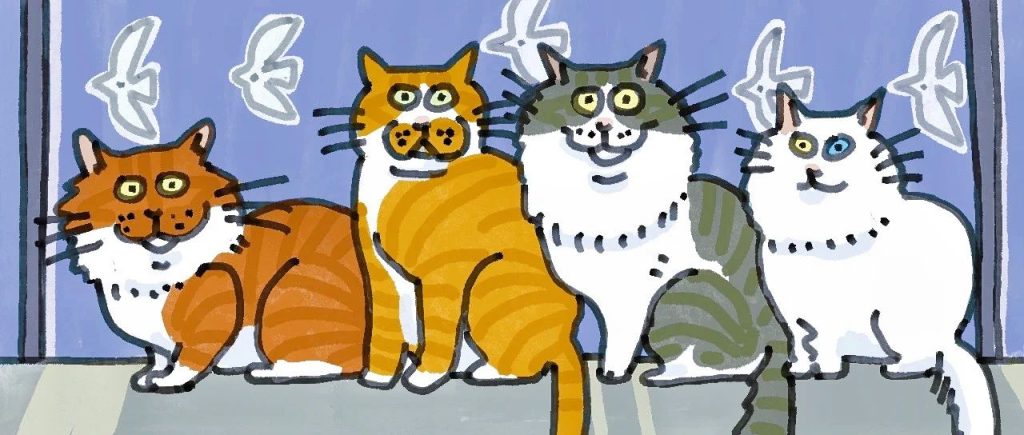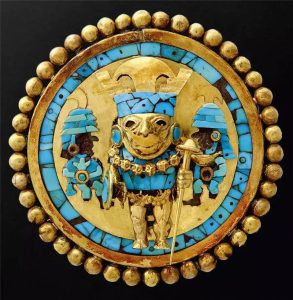Are Cats Colorblind? What Does the World Look Like Through Their Eyes?In this colorful world, humans can distinguish thousands of colors, but what about cats? How do they perceive their visual world? Is it true, as many people say, that cats are colorblind and only see a world in shades of black, white, and gray? Today, let’s dive into the visual world of cats and uncover the secrets that remain unknown to most of us!
-
Are Cats Colorblind?
Actually, cats are not completely colorblind. While their visual system is different from that of humans, they can indeed distinguish certain colors. However, their sensitivity to color is relatively low, and they can’t perceive the wide range of colors that humans can. Cats’ eye structure is different from ours, and their retinas contain fewer cone cells. Cone cells are responsible for color perception, so cats’ ability to differentiate colors is weaker. But this doesn’t mean that cats see only in black, white, and gray. In fact, cats can distinguish blue and green, and they have some ability to perceive yellow and purple. However, these colors may not appear as vibrant and rich to cats as they do to humans. Therefore, we can say that cats are color weak. So, what does the world look like through a cat’s eyes? Imagine wearing a pair of color-filtering glasses—everything looks a little blurry and monotone, but you can still distinguish basic colors. This is what a cat’s world looks like. While they can’t see the vibrant colors humans can, they are still able to perceive the contrast between blue and green and the brightness of yellow.
-
Wider Field of Vision, Like a Little Glass Ball!
Cats have a 200° field of vision, while humans only have 180°. This means cats can see more of what’s around them with their peripheral vision. However, just like humans, they have blurry areas in the peripheral vision on both sides.
-
Near-Sighted High-Speed Camera
A normal human can see objects from about 30-60 meters away, but cats can only see clearly up to about 6 meters. So, they can’t identify small details at a distance like humans can. Although cats are quite nearsighted, they rely more on shape, size, movement, and scent to understand and perceive the world around them. Especially when it comes to moving objects, cats are incredibly sensitive, quickly detecting the movement of prey even at 50 meters away. A prey animal moving just 4mm per second can be noticed by a cat. Therefore, what appears as a fast-moving object to us is simply a normal moving object to a cat.

-
Titanium Alloy Eyes—Bright and Shiny in the Dark!
Cats have more rod cells in their eyes, which makes their vision clearer in low-light conditions than ours. Additionally, their large, oval pupils can gather more light, and a structure called the “tapetum lucidum” enhances the light-gathering ability, making their eyes shine in the dark. The “titanium alloy” glow we often see in their eyes is the result of this reflective layer. Cats have amazing night vision, allowing them to track prey and move quickly in the dark. However, due to their lack of color sensitivity, they can’t see as much detail. While their visual world may not be as rich as ours, cats’ vision is still uniquely fascinating. I like to think that a cat’s eyes hold the stars and the sea! Additionally, cats’ eyes are great at expressing their emotions and states, helping us understand their inner world better.
-
Beyond Vision: Other Senses of Cats
In addition to their vision, cats have many other incredible sensory abilities. Their hearing is highly sensitive, allowing them to hear high-frequency sounds that humans can’t detect. Cats also have an exceptional sense of touch, capable of feeling tiny vibrations and temperature changes. Their sense of smell is also incredibly sharp, helping them judge their surroundings and the condition of objects. These combined sensory abilities allow cats to get a comprehensive understanding of their environment. In a cat’s world, they have their own lifestyle and social rules. They communicate through observation, sniffing, and touch, creating tight-knit group connections, and their interactions with each other are full of fascinating behaviors.
Additionally, a cat’s visual world is closely tied to its personality and behavior habits. Every cat has its own unique character and preferences, which are reflected in how it perceives and reacts to its surroundings. For example, some cats love chasing birds and insects, while others prefer to quietly lie in the sun and soak up the warmth. Just like humans, cats have their own ways of perceiving the world and understanding it. By paying more attention to both your cat’s and your own needs, you can enjoy each other’s company and live a happy, fulfilling life together!





